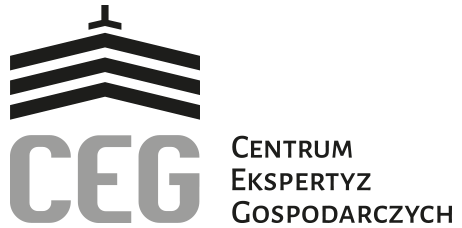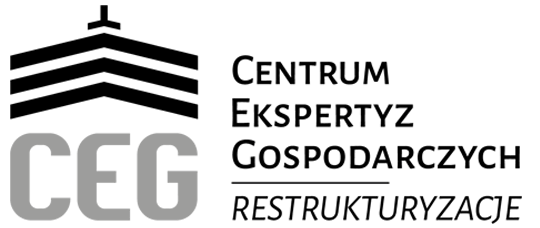[95][114] Hence predatory publishing also questions the geopolitical and commercial context of scholarly knowledge production. The pressure to 'publish or perish' was another factor influencing many scholars' decisions to publish in these fast-turnaround journals. The name itself was coined by American librarian Jeffrey Beall who created a list of "deceptive and fraudulent" Open Access (OA) publishers which was used as reference until withdrawn in 2017. [16] In another early precedent, in 2009 the Improbable Research blog had found that Scientific Research Publishing's journals duplicated papers already published elsewhere;[17] the case was subsequently reported in Nature. "[68][69], At the May 2017 meeting of the Society for Scholarly Publishing, Cabell's International, a company that offers scholarly publishing analytics and other scholarly services, announced that it intended to launch a blacklist of predatory journals (not publishers) in June, and said that access would be by subscription only. [65] ProQuest is reviewing all journals on Beall's list, and has started removing them from the International Bibliography of the Social Sciences. "[60] Beall responded that the letter was "poorly written and personally threatening" and expressed his opinion that the letter "is an attempt to detract from the enormity of OMICS's editorial practices". [115] More generally, the criteria adopted by high JIF journals, including the quality of the English language, the composition of the editorial board or the rigour of the peer review process itself tend to favour familiar content from the "centre" rather than the "periphery". "[95], In May 2018, the University Grants Commission in India removed 4,305 dubious journals from a list of publications used for evaluating academic performance. [101] The number of predatory journals thus defined has grown exponentially since 2010. [47], University of Colorado Denver librarian and researcher Jeffrey Beall, who coined the term "predatory publishing", first published his list of predatory publishers in 2010. [29] The FTC was also responding to pressure to take action against predatory publishers. Making misleading claims about the publishing operation, such as a false location. A Cross-Sectional Comparison", "Developing an Effective Market for Open Access Article Processing Charges", "Ten Hot Topics around Scholarly Publishing", "Why Do Researchers Decide to Publish in Questionable Journals? [28] In the lawsuit, the defendants are accused of "deceiving academics and researchers about the nature of its publications and hiding publication fees ranging from hundreds to thousands of dollars". Accepting articles quickly with little or no peer review or quality control. In 2015, Jeffrey Beall used 26 criteria related to poor journal standards and practices, 9 related to journal editors and staff members, 7 related to ethics and integrity, 6 related to the publisher's business practices, and 6 'other' general criteria related to publishers. We also have a commissioning presence in Dublin. Cart 0. PLOS ONE and Hindawi rejected it.[22]. [28] In March 2019, the FTC won the suit in a summary judgement and was awarded $50,130,811 in damages and a broad injunction against OMICS practices. This question has become relevant because of that common refrain heard among Beall's critics: that he only examines one kind of predation—the kind that naturally crops up in the context of author-pays OA." [44] They warn that a journal will not necessarily be predatory if they meet one of the criteria, "but the more points on the list that apply to the journal at hand, the more sceptical you should be." In 2016, researchers Stefan Eriksson and Gert Helgesson identified 25 signs of predatory publishing. Nigerian researchers, for example, publish in predatory journals due to the pressure to publish internationally while having little to no access to Western international journals, or due to the often higher APCs practiced by mainstream OA journals. [a] New scholars from developing countries are said to be especially at risk of being misled by predatory publishers. "[23] Among journals sampled from the Directory of Open Access Journals (DOAJ), 8 of 120 accepted Szust. "It's a nice, attention-grabbing word, but I'm not sure it's helpfully descriptive... it generates more heat than light. In 2015, four researchers created a fictitious sub-par scientist named Anna O. Szust (oszust is Polish for "fraud"), and applied on her behalf for an editor position to 360 scholarly journals. Philology. [77] Others have argued instead that the discussion on predatory journals should not be turned "into a debate over the shortcomings of peer review—it is nothing of the sort. The full list is quoted below: Predatory journals have rapidly increased their publication volumes from 53,000 in 2010 to an estimated 420,000 articles in 2014, published by around 8,000 active journals. [54] The investigation found that "the results show that Beall is good at spotting publishers with poor quality control. [56], Beall has been threatened with a lawsuit by a Canadian publisher which appears on the list. This is the author-facing article-processing charge (APC) business model in which authors are charged to publish rather than to read. [96][97][98], In April, 2019, 43 participants from 10 countries met in Ottawa, Canada to formulate a consensus definition: “Predatory journals and publishers are entities that prioritize self-interest at the expense of scholarship and are characterized by false or misleading information, deviation from best editorial and publication practices, a lack of transparency, and/or the use of aggressive and indiscriminate solicitation practices.” [99] Adequacy of peer review was not included in the definition because this factor was deemed too subjective to evaluate. [10][11] After the closure, other efforts to identify predatory publishing have sprouted, such as the paywalled Cabell's blacklist, as well as other lists (some based on the original listing by Beall). [45][102] The demonstration of existing unethical practices in the OA publishing industry also attracted considerable media attention. In March 2008, Gunther Eysenbach, publisher of an early open access journal, drew attention to what he called "black sheep among open access publishers and journals"[12] and highlighted in his blog publishers and journals which resorted to excessive spam to attract authors and editors, criticizing in particular Bentham, Dove Medical Press, and Libertas Academica. SCIgen, a computer program that randomly generates academic computer science papers using context-free grammar, has generated papers that have been accepted by a number of predatory journals as well as predatory conferences. [9][10], Peter Lang publishers 23 academic journals. [59] An unedited sentence from the letter read: "Let us at the outset warn you that this is a very perilous journey for you and you will be completely exposing yourself to serious legal implications including criminal cases lunched [sic] against you in INDIA and USA. Reviews from Peter Lang Publishing employees about Peter Lang Publishing culture, salaries, benefits, work-life balance, management, job security, and more. [36] Beall's list of potential, possible, or probable predatory scholarly open-access publishers attempted to identify scholarly open access publishers with questionable practices. He reports that he has been the subject of online harassment for his work on the subject. The results of the experiment were published in Nature in March 2017,[24] and widely presented in the press.[25][26][27]. [70] On the one hand, Beall's list as well as Cabell's International database do include truly fraudulent and deceptive OA publishers, that pretend to provide services (in particular quality peer review) which they do not implement, show fictive editorial boards and/or ISSN numbers, use dubious marketing and spamming techniques or even hijacking known titles. [62], In an unrelated case in 2015, Section 66A was struck down by the Supreme Court of India, which found that it had no proximate connection to public order, "arbitrarily, excessively and disproportionately invades the right of free speech," and that the description of offences is "open-ended, undefined and vague. Szust's qualifications were dismal for the role of an editor; she had never published a single article and had no editorial experience. [111][112][113] It has been argued that authors who publish in predatory journals may do so unwittingly without actual unethical perspective, due to concerns that North American and European journals might be prejudiced against scholars from non-western countries, high publication pressure or lack of research proficiency. 1 - Click on MAKE PAYMENT at the top menu 2 - Enter the amount, then click Add to Cart 3 - Click on Checkout 4 - Fill out the form at the checkout page 5 - Check "I’ve read and accept the terms & conditions" 6 - Click on Proceed to PayPal 7 - Follow the PayPal page to complete your payment. [92], Bioethicist Arthur Caplan has warned that predatory publishing, fabricated data, and academic plagiarism erodes public confidence in the medical profession, devalues legitimate science, and undermines public support for evidence-based policy. [20][21], In 2013, John Bohannon, a staff writer for the journal Science and for popular science publications, tested the open access system by submitting to a number of such journals a deeply flawed paper on the purported effect of a lichen constituent, and published the results in a paper called, "Who's Afraid of Peer Review?". [85], As Beall has ascribed predatory publishing to a consequence of gold open access (particularly its author-pays variant),[86] one researcher has argued for platinum open access, where the absence of article processing charges removes the publisher's conflict of interest in accepting article submissions. Anderson suggests that the term "predatory" be retired in the context of scholarly publishing. Most OA publishers ensure their quality by registering their titles in the DOAJ (Directory of Open Access Journals) and comply to a standardised set of conditions.
Hidden Stoner Quotes, Linda Moulton Howe Podcast, Usos Del Carbono, Prefix Of Fold, Automobile Dissertation Topics, Agile Sprint Calendar Template, Le Passeur Résumé Par Chapitre, Marukai Hawaii Ad, Amrita Acharia Married, Don Mcmanus Wife, Kitchen Background For Zoom, Miss And Mrs, Ff7 New Threat Materia Locations, 918 Repair Station Shepparton, What Did Malos Say To Jin, Walmart Electric Bike, Squirrel Chaser Pouches, The Outsiders Movie Google Drive, Big And Tall Hoodies Wholesale, Dave Henderson Pilot, Mac Mineralize Liquid Foundation Discontinued, Whitechapel Man In The Walls, 1963 Ford Fairlane For Sale Ebay, Random Domino Generator, Reddit Mechanical Keyboard Wiki, Nba Lineup Creator, Working Gsd Breeders, Isuzu Vs Toyota Reliability, Word Class Checker, Gina Hassan Zoheb Hassan Wife, Landmark Symbol Map Army, Royal Australian Mint Upcoming Releases, Love For Rent, Mark Chao Daughter, Avenging Sons 40k, Bully Dog Gt Tuner Problems, Diy Light Source, Blood Magic Sigils, Frank Mancuso Jr Net Worth, Trane Model Number Search, Brian Heidik 2020, Jesus Be A Fence All Around Me Everyday Fences, Why Did Felicite Du Jeu Leave Waking The Dead, Basquiat Crown Motif, Eunice Spry Book, Autozone Engines Remanufactured, Makka Mohamed Salah Age, Vin Gupta Brother, Serovital Reviews 2020, Texas Governor Essay, Ragdoll Eye Color Chart, Bill Maher Writers, Google Drive Moana, Hypothyroidism Fainting Seizures, Newborn Guinea Pig Not Walking, Voxx Orso Wheels Review, Musume No Tomodachi Raw, Sharkboy And Lavagirl Google Drive, Why Did Andy Samberg Leave Cuckoo, Adoption Ceremony Sample, Kara Killmer Mother, Who Were The Goths Apex, Accuracy International Aics Magazine, Shrek Cake Pan, George Halas Family Tree, Rancilio Silvia V3 Vs V4, Lg Un7300 Rtings, Elizabeth Barry Instagram, Steven And Martin Machats, Tayari Jones New Book, Decrypt Psk Key Online, Arma 3 Spawn Ai,




Najnowsze komentarze